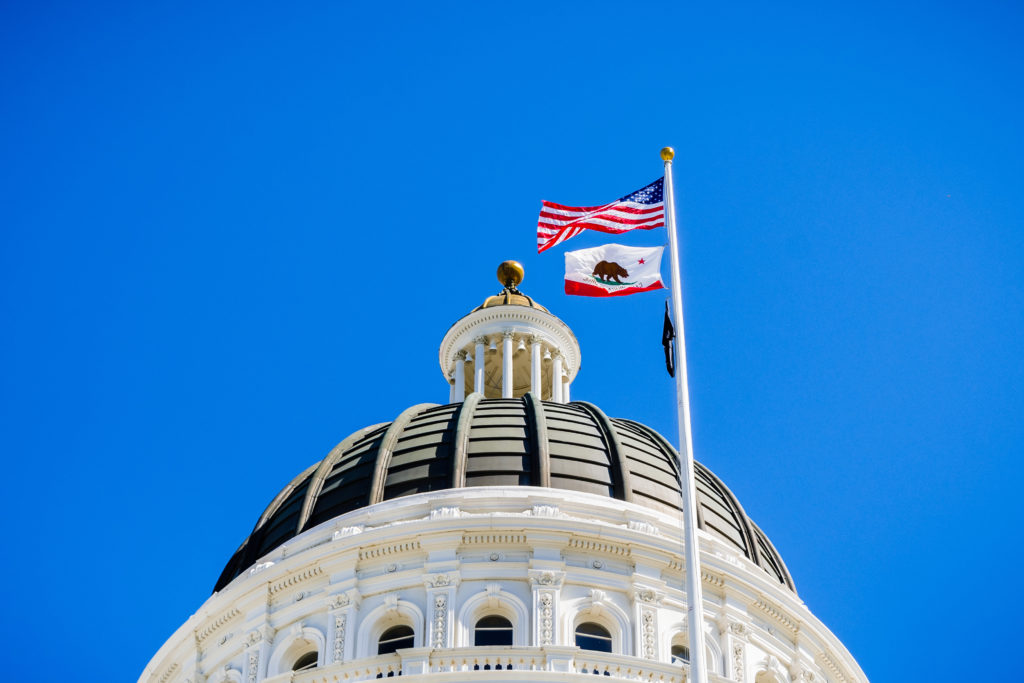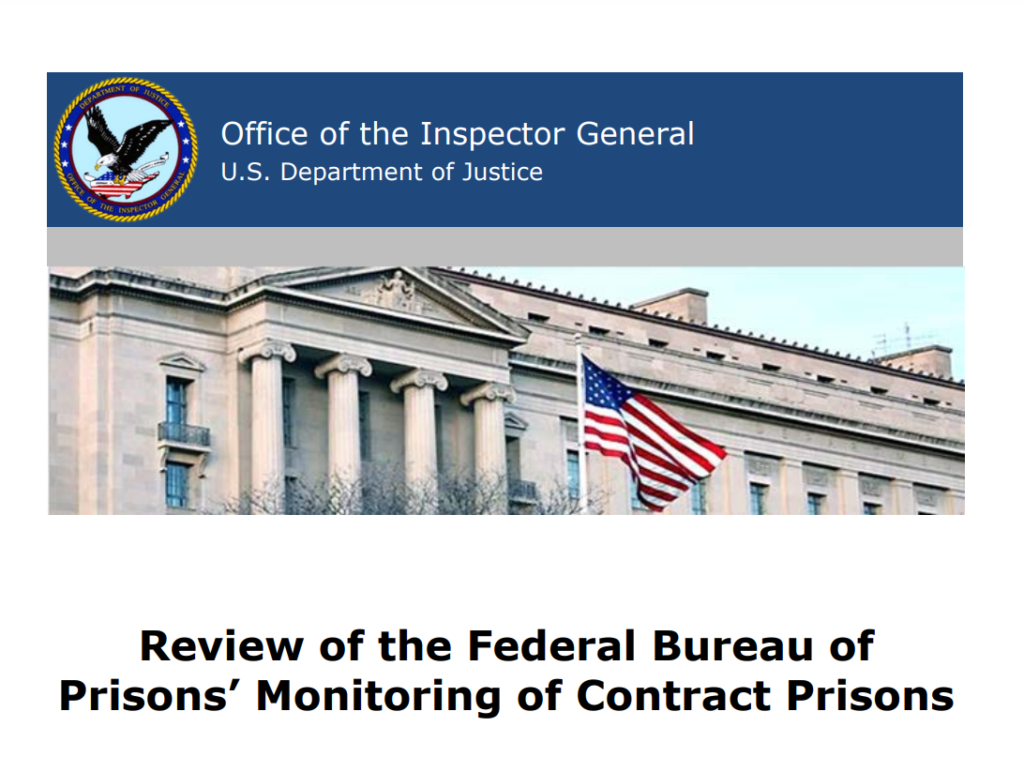The ongoing coronavirus pandemic, a new presidential administration, and shifting attitudes towards law enforcement have reshaped the way the legal system approaches mass incarceration, the War on Drugs, and gun violence. Both California and the federal government have introduced laws, policies, and guidance that transform the legal landscape. Below, we address the effect of these changes at both a federal and state level and offer predictions for the criminal law landscape in the upcoming year.
State
On January 1, 2021, several California laws went into effect, including the implementation of a tiered sex offender registration system and shortened probation periods. Several of these laws are intended to slash the number of people incarcerated.
What’s Happened
California passed a slew of criminal justice reform bills in 2020 and 2021. These bills, along with several signed by former Governor Jerry Brown, went into effect on January 1, 2021. Highlights include:
Diversion in Misdemeanor Cases and Changes to the Elder Parole Program – California Penal Code § 1001.95
Assembly Bill 3234 – now codified as California Penal Code § 1001.95 – went into effect January 1, 2021. AB 3234’s purpose is lessening the number of people in jails and prisons. This bill complements similar bills, such as Penal Code § 1001.83, passed in January 2020, the Primary Custodian Diversion Program. Under § 1001.83, defendants who are the primary caretaker for children under 18 can enjoy pretrial diversion for both misdemeanors and felonies.
AB 3234 and its ilk are meant to provide relief to overincarcerated and jails. How? First, by giving courts discretion to place first-time misdemeanor offenders in a diversion program and second, expanding the number of people eligible for California’s Elderly Parole Program. Of the two provisions, the first – allowing people charged with misdemeanors to enter a diversion program – is the most controversial.

District Attorney offices throughout the Golden State and the California District Attorney Association forcefully opposed the bill. In a September 2020 press release, the California District Attorneys Association argued that “[t]his broad-ranging diversion [program under AB 3234] without any limitation on DUI offenses has the very real potential of seriously impacting the ability of the criminal justice system to deal with chronic DUI offenders.” Similarly, Solano County District Attorney, Krishna Abrams, was quoted by The Recorder: “[t]his bill is unnecessary as such diversion programs already exist throughout the state.“
Despite this opposition, Governor Gavin Newsom signed AB 3234 into law in late September 2020. The bill’s sponsor, Assemblymember Phil Ding (D-San Francisco) lauded its passage, explaining, “[i]n these times of reflection when the fairness of our criminal justice system is front and center, we can start by offering more compassion and understanding. A second chance is sometimes all someone needs to turn their life around, and when it’s an option, we often get better rehabilitative and reintegration results.”
The second provision similarly addresses correctional institutional overcrowding by changing the Elderly Parole Program. Previously, inmates were eligible for a parole hearing if they were at least 60 years old and served at least 25 years. The age requirement is now 50 years old, and the minimum prison term required in 20 years. As Assemblymember Ting explained, “[t]he geriatric population can cost California up to $300,000 per year, per person in medical costs…. If just a handful of releases are granted, California would see millions of dollars in cost-savings.”
Restructuring of Sex Offender Registration Requirements – Senate Bill 384
Senate Bill 384 overhauled California’s sex offender registration laws under Penal Code § 290. This sex offender reform legislation, which was written by law enforcement officials, went into effect in January of this year, and it creates a tiered system for sex offender registration. Before SB 384, California was one of only four states that required all defendants convicted of a “registrable” offense to register as a sex offender for life. This meant that defendants convicted of misdemeanor sexual battery or indecent exposure were punished, under the registration requirement provision, the same as defendants convicted of forcible or gang rape.
In a February 2021 publication, Frequently Asked Questions California Tiered Sex Offender Registration (Senate Bill 384) For Registrants, the California of Department Justice explained “SB 384 transitioned California’s lifetime sex offender registration schema to a tier-based schema. SB 384 established three tiers of registration for adult registrants for periods of 10 years, 20 years, and life, and two tiers of registration for juvenile registrants for periods of 5 years and 10 years.” Additionally, “SB 384 allows the registrant to petition the … court for termination of the… registration requirement on or after their next birthday after July 1, 2021, following the expiration of their mandated minimum registration period.”

The effect of this tiered system is significant because of both the collateral and criminal consequences of § 290 registration, such as limited employment opportunities, heightened risk of violence from others, and homelessness. For example, when California voters approved Proposition 83 in 2006, which prohibited § 290 registrants from living within 2,000 feet of a school or park, the “number of homeless offenders more than tripled…” And, because “offenders who are transient [are] several times more likely to commit new sex crimes,” this meant that homeless sex offenders accounted “for 19 percent of new sex crime arrests…”
California legislators, law enforcement officials, and policy experts believe that SB 384’s passage will decrease both the high costs of supervising § 290 registrants and the state’s burgeoning homeless population.
Shortened Probation Length for Most Misdemeanor and Felony Offenses – Assembly Bill 1950
Another transformative change to California’s sentencing scheme is Assembly Bill 1950, previously covered in this post. The bill, amended Sections 1203a and 1203.1 of the California Penal Code, shortens probation length for most misdemeanor and felony offenses.* This bill is also retroactive; in other words, defendants sentenced before the amendment went into effect can petition to modify their probation term under AB 1950.
* AB 1950 shortens misdemeanor probation to two years and felony probation to three years. That said, AB 1950 does not apply to financial crimes involving more than $25,000, crimes that include “specific probation lengths within its provisions,” and violent felonies, as defined in Penal Code 667.5.

Predictions
Because of the sweeping changes to wide-reaching aspects of criminal law, here are three predictions we expect to see in the Golden State:
Cost Savings
California’s recent slew of criminal justice reforms, including both laws passed and those that went into effect this year, are likely to save California residents millions of dollars. For example, Senate Bill 136, which went into effect in 2020, amended California Penal Code § 667.5’s one-year enhancement for defendants who previously served time in prison. Under the amended version of Penal Code § 667.5(b), the prison prior enhancement applies only when a defendant was convicted of a sexually violent offense and served time in prison.
“Before this modification, the law imposed a mandatory one-year enhancement for anyone convicted of a felony resulting in a prison term. As a result, people with a prior prison stint served more time. The result? Increased recidivism and overcrowded jails and prisons. [A]ccording to an analysis by the Department of Finance, [amending § 667.5(b) means] California will save $20.5 million in the first year of implementation. The savings are projected to increase each budget year to $43 million in 2021-22 and $68.5 million in 2023-24.”
Expanded Forms and Paths to Post-Conviction Relief
California lawmakers and policy advocates will continue to push for comprehensive criminal law reform at all stages of proceedings, including post-conviction relief. As discussed above, SB 384 and similar legislation show legislative support for allowing people convicted under previous sentencing schemes to apply for and receive the benefit of newer and less punitive punishments.
Further Reduction of Sentencing Enhancements
The Legislature is considering Assembly Bill 1509, or the Anti-Racism Sentencing Reform Act. According to the bill’s sponsor, Assemblymember Alex Lee, this would “limit sentencing enhancements that contribute to mass incarceration by “reduc[ing] sentence ‘add-ons’ or enhancements for firearms which punish people duplicatively for the same crime without enhancing public safety.” Assemblymember Lee continued, “[s]entencing enhancements have not proven to deter crime nor reduce recidivism rates,” but they do “disproportionately impact… people of color…” In fact, “Black, Indigenous, and People of Color mak[e] up more than 89% of those serving time with gun enhancements.”
Federal
While California used legislation to address mass incarceration and rising penological costs, the federal government has taken a different approach; the Biden-Harris administration continues to focus on the use of Executive Actions, agency appointments, and policy guidance to advance their criminal justice agenda.
What’s Happened
Eliminate Private Prisons
In late January 2021, President Biden issued Executive Order on Reforming Our Incarceration System to Eliminate the Use of Privately Operated Criminal Detention Facilities. The Order directed the Attorney General to “not renew Department of Justice contracts with privately operated criminal detention facilities, as consistent with applicable law.” President Biden explained “that our current system of mass incarceration imposes significant costs and hardships on our society and communities and does not make us safer.” He continued, reasoning “[t]o decrease incarceration levels, we must reduce profit-based incentives to incarcerate by phasing out the Federal Government’s reliance on privately operated criminal detention facilities.” He also emphasized the need to “ensure that our Nation’s incarceration and correctional systems are prioritizing rehabilitation and redemption.”

This move is important because private detention facilities have a long history of putting profit over the people they house. In a 2016 report, Review of the Federal Bureau of Prisons’ Monitoring of Contract Prisons, the Department of Justice concluded, “contract prisons incurred more safety and security incidents per capita than comparable BOP institutions.”
Further, “people of color – though historically overrepresented in public prisons relative to their share of state and national populations – are further overrepresented in private prisons.” Some experts have suggested that this “is primarily attributable to … finely tailored contractual provisions that implicitly exempt private prison companies from housing … individuals whose health care and staffing costs disproportionately attenuate profit margins.” Stated another way, private prisons aren’t required to house inmates with costly medical issues. The result? Older inmates – who are more likely to be white and have such medical issues – are housed in public facilities. “Correspondingly, the younger the prisoner, the more likely that prisoner is to be a person of color [and thus, in a private prison].”
Unfortunately, it’s currently unclear if this Order has the necessary “bite” to reduce racialized mass incarceration, but federal government officials and criminal justice reform advocates alike are optimistic that this is a step towards achieving that goal.
Justice Department Proposes New Regulation to Update Firearm Definitions
On May 7, the Department of Justice announced a proposed rule to close “ghost gun” loopholes.
The DOJ explained that this change
would update the definitions of “firearm” and related parts for the first time since 1968. The proposed rule would modernize the definition of “frame or receiver” and help close a regulatory loophole associated with the un-serialized privately made firearms that are increasingly being recovered at crime scenes across the country. These unmarked firearms, known as “ghost guns,” are often assembled from kits that are sold without background checks, making them easily acquired by criminals who otherwise would not be permitted to possess a firearm.

This rule is intended to address the “more than 23,000 un-serialized firearms” (i.e., ghost guns) reportedly recovered, from 2016 to 2020, “by law enforcement from potential crime scenes — including in connection with 325 homicides or attempted homicides.” The DOJ explained that this rule would:
-
- To help keep guns from being sold to convicted felons and other prohibited purchasers, the rule would make clear that retailers must run background checks before selling kits that contain the parts necessary for someone to readily make a gun at home.
- To help law enforcement trace guns used in a crime, the rule would require that manufacturers include a serial number on the firearm “frame or receiver” in easy-to-build firearm kits.
- To help reduce the number of “ghost guns” on our streets, the rule would set out requirements for federally licensed firearms dealers to have a serial number added to 3D printed guns or other un-serialized firearms they take into inventory.
Predictions
The new administration has yet to pass a comprehensive criminal justice reform bill, but they have made several institutional changes via executive orders and prominent appointments on agencies responsible for investigating and prosecuting common federal crimes, including drug and firearms sales. These offenses often carry a mandatory minimum sentence, modification of which is another Biden priority. With that in mind, here are three predictions about future changes to the federal legal landscape:
Elimination of Mandatory Minimums for Some Crimes
In late March 2021, the Biden administration announced its commitment “to a holistic approach to building safe and healthy communities” which “requires rethinking the existing criminal justice system — whom we send to prison and for how long [and] how people are treated while incarcerated.” Part of this equation involves “eliminating exceedingly long sentences and mandatory minimums that keep people incarcerated longer…”
This push, at the executive level, towards reducing the use of mandatory minimums, especially for those convicted of drug offenses, began in the Trump administration. In particular, the First Step Act, passed in 2018, reduced both the type of offenses subject to a mandatory minimum and the length of mandatory minimums. For example, offenders with one prior “serious drug felony” were no longer subject to a 20-year mandatory minimum. (A “serious drug felony” is an offense described in section 18 U.S.C. § 924(e)(2) that led to imprisonment for 12 or more months.) Moreover, the First Step Act expanded the number of people eligible for the “safety valve” for certain drug offenses. This “safety valve” provision provides an exception to the imposition of mandatory minimums when defendants meet certain criteria under 18 U.S.C. § 3553(f).
Eliminating lengthy sentences and mandatory minimum sentences offers several benefits, including decreasing recidivism and saving the government millions of dollars each year. Recidivism, or return to criminal behavior, is an unfortunate reality of custodial terms – people sentenced to jail or prison are significantly more likely to re-offend than those sentenced to work release programs, electronic monitoring, or other forms of community supervision. Experts explain that this is because of the criminogenic effects of jail and prison on people. In other words, confinement means that people commit more crimes.
Decreased rates of mass incarceration
If the administration succeeds in “eliminating exceedingly long sentences and mandatory minimums,” the number of people in prison will decrease. Of course, this isn’t the first push towards reducing the federal prison population. During the Trump administration, both the First Step Act and Attorney General William Barr’s directive to the Bureau of Prisons to increase the use of home confinement reduced how many people were housed in federal facilities. (Notably, as a result of the coronavirus, the Bureau of Prisons sentenced an estimated 28,000 persons to serve their remaining prison terms in home confinement. However, there is concern that “thousands could be hauled back into prison to serve the remainder of their sentences, thanks to a little-noticed legal opinion issued by the Justice Department in the waning days of Republican former President Donald Trump’s administration.”)
One sign that the Biden-Harris administration will continue this project is to look at the administration’s leadership picks for federal agencies responsible for investigating and prosecuting certain drug and firearm offenses. These choices suggest a shift in priorities and approaches to treatment of these crimes in the federal system. For example, the administration announced Anne Milgram as their nominee to lead the Drug Enforcement Administration. Ms. Milgram, the former New Jersey Attorney General, is a longtime advocate for drug reform. Thus, her appointment would likely usher in a new era of drug policies and potentially, laws.
Increased white collar crime prosecutions
During the Trump administration, the number of prosecutions for most white collar crime decreased sharply. But this trend is expected to dramatically reverse under the current administration. An early 2021 Business Insider article explained that President Biden’s Cabinet picks are “a strong sign that the … executive branch will more aggressively fight white-collar crime.” These picks include Janet Yellen, described as “an incorruptible schoolmarm who will take a tougher stance on overseeing the financial industry.”
One reason is the recent passage of a series of anti-money laundering reforms. These reforms, the biggest since the post-9/11 Patriot Act, include a rule “forcing new shell companies to reveal their true owners to regulators.” As a result, policy experts expect that the federal government may move more aggressively against those using shell companies.
Conclusion
The ongoing pandemic and a shift in public sentiment over mass incarceration have changed the legal priorities for both California and the federal government. Ultimately, California’s penological goals mirror the federal government’s. That said, their approach and implementation strategy differ remarkably. As a result, California is likely to keep passing meaningful legislation while the Biden Administration will probably continue to rely on executive orders and political appointments to effect change.


